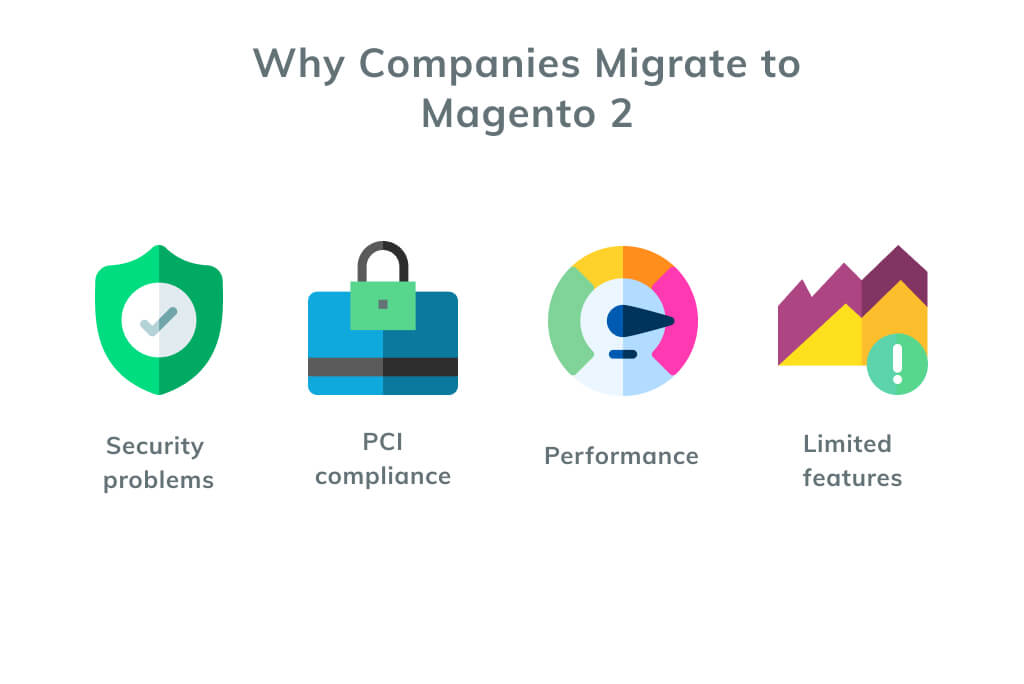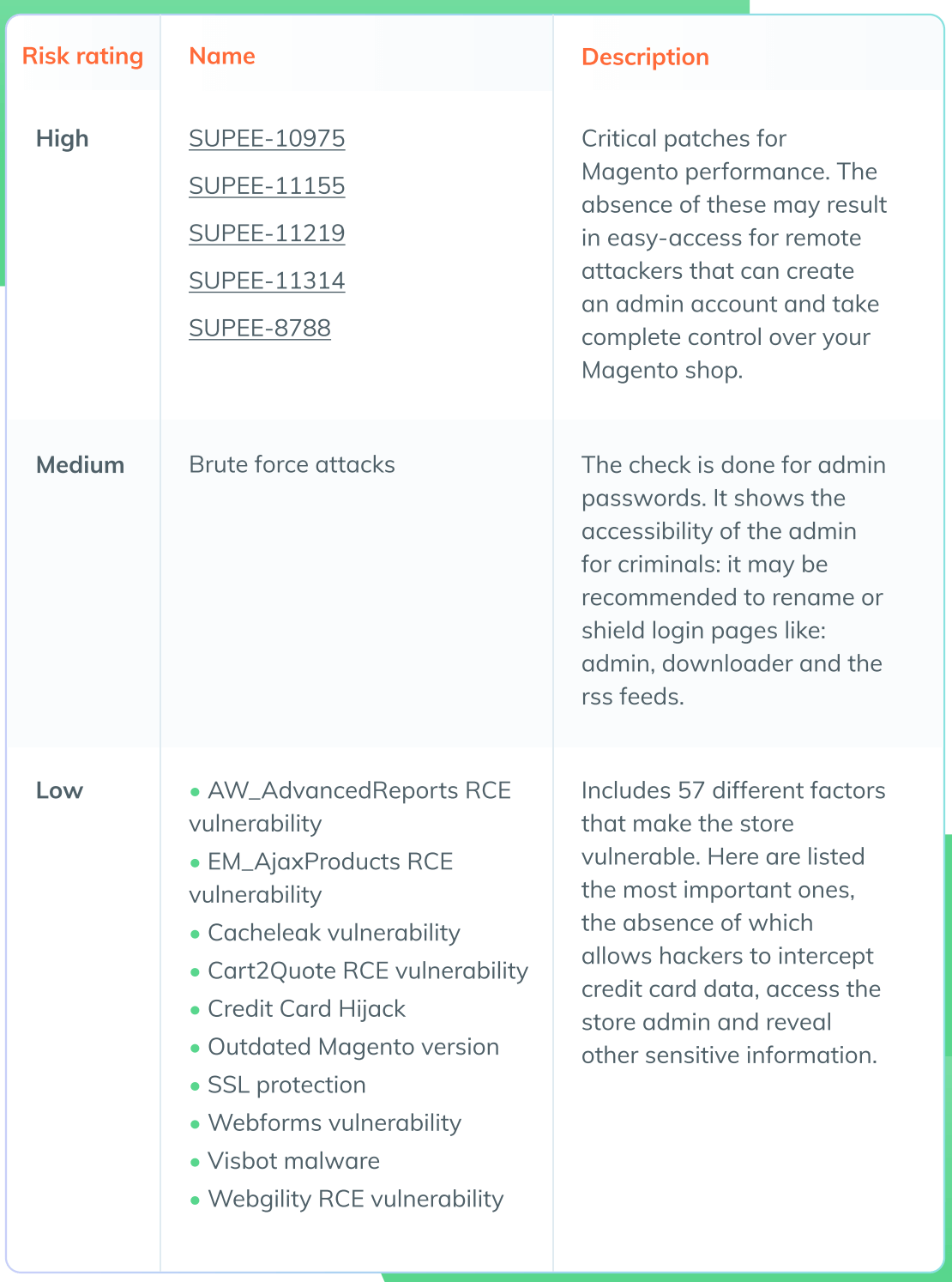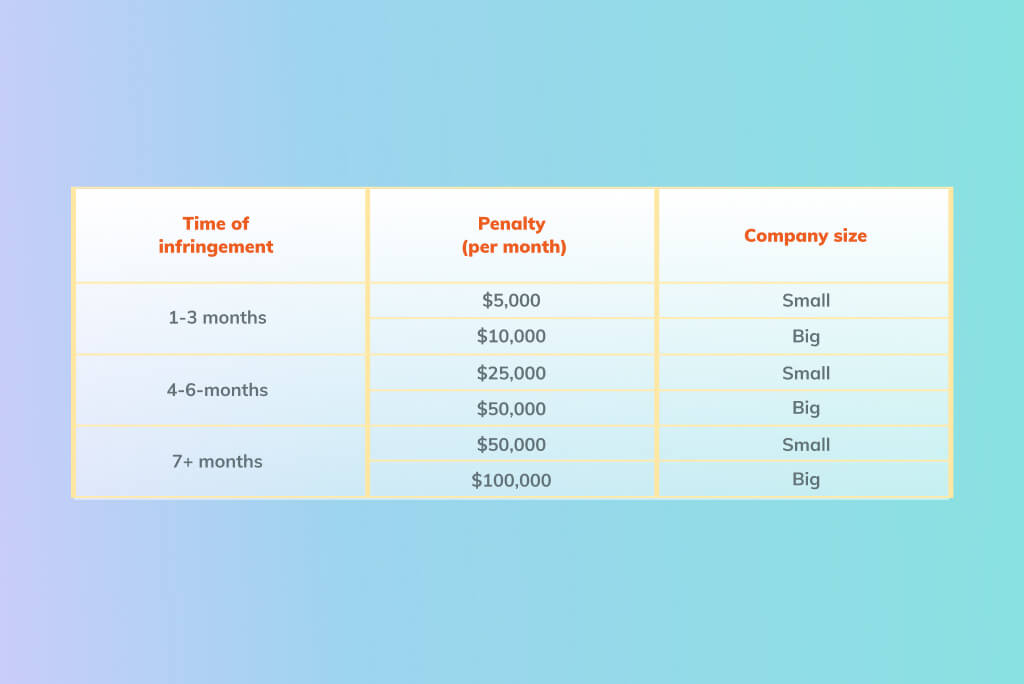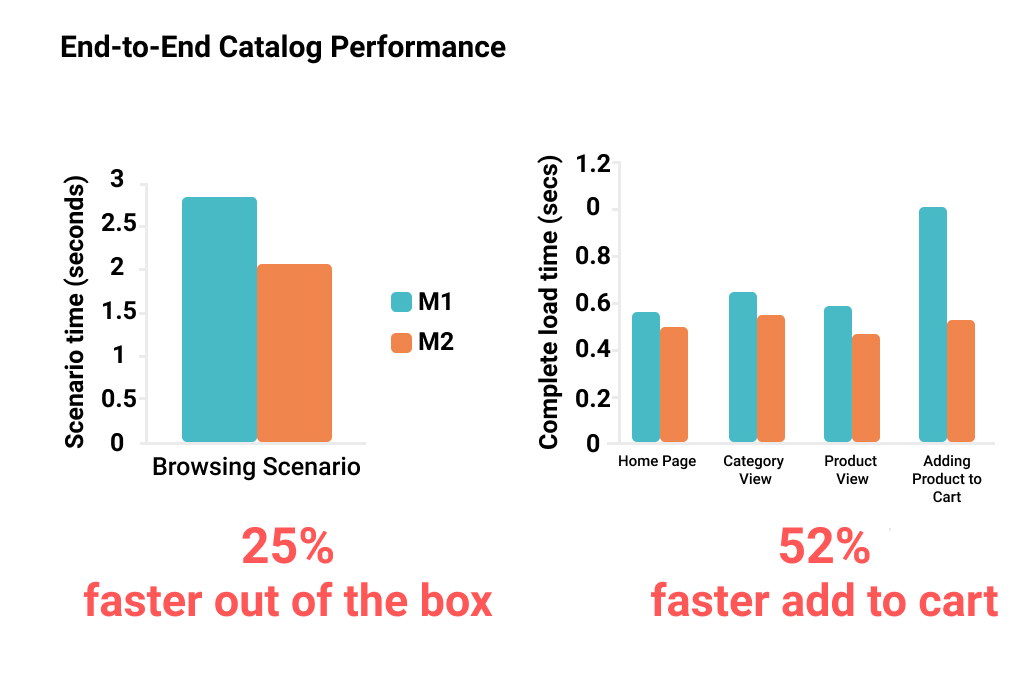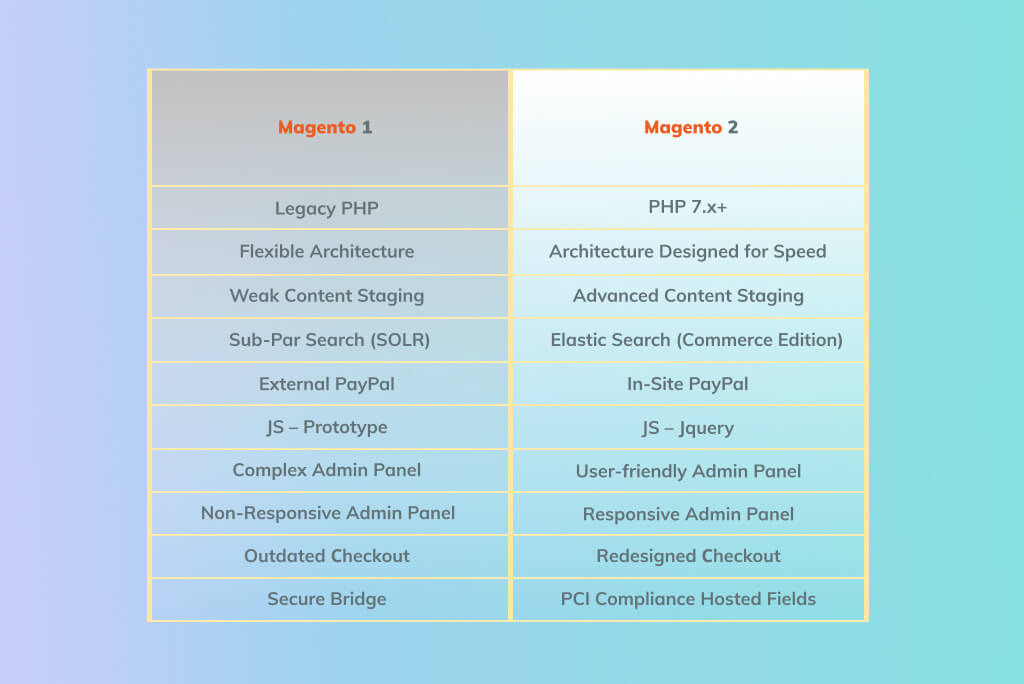What has happened since Magento 1 End of Life and the time when we said our goodbyes to the beloved eCommerce platform?
Today is the 3-month anniversary of Magento 1 Sunset Date.
In this article, we prepared the 3-month review of the most important news and main reasons companies are actively migrating to Magento 2. It covers the following points on the examples of real-life cases of our clients:
- what challenges wait for M1 stores after Magento 1 sunset date
- why our clients have already migrated to Magento 2 + results they got
- real-life benefits of Magento 2 migration for a business
It’s time to uncover the truth behind the decision to move to M2.
The End of Magento 1 Support
Magento 1 was a long-planned event. eCommerce businesses had enough time to make a life-changing decision and to either move to Magento 2 or stay on Magento 1. Despite the dangers of the latter decision, many continue to use the already obsolete eCommerce platform.
Even before the Magento 1 sunset date, many businesses had already voiced concerns about the dangers of the pending platform sunset.
Visa and then FBI urged M1 store owners to make the move before Magento 1 sunset date. These two organizations were the most concerned about the security of the platform after it would have become obsolete.
While some companies are still hesitating, many have already successfully migrated to Magento 2, since the dangers of staying on M1 became real after Magento 2 sunset date.
Do you want to check how your M1 store stands against the dangers of Magento 1 sunset?
Our team prepared an extensive eBook explaining all key website metrics for a Magento 1 store. You will learn about areas that require your utmost attention and learn how to check each metric.
Get a Free eBook
Why Companies Have Already Migrated to Magento 2
Magento 1 sunset date urged businesses to migrate to Magento 2. Each company has a number of reasons why they decided to migrate. Read on the article to learn why our clients have already migrated to Magento 2.
Security Problems
No security patches mean no security improvements.
Security is the first and foremost reason why companies leave Magento 1 and migrate to Magento 2. After Magento 1 sunset date, M1 stores are not secure anymore.
Magento 1 is like Windows XP. You can still use it, but it doesn’t guarantee a high level of security for your customers and your business.
M1 lacks a lot of crucial security patches and is vulnerable to a lot of security threats. Below you can see a table demonstrating the main security threats that plug Magento 1 stores.
All our clients named security concerns as the main reason why they decided to pursue Magento 2 migration. No store can afford to put the safety of their business and customers along with sensitive data at any security risk.
Turns out, they were right. Sansec BV, a company specialized in skimming prevention, identified that nearly 2,000 Magento 1 stores were hacked during the of September 12-13. A few days later, the number of the hacked M1 websites reached 4,000.
Attackers used the 0-day exploit, which allowed them to get access to the backend of the websites and place a malicious script in the code. The script captures the payment card data that unaware customers type in on the checkout page and send it back to the hackers.
Sansec BV identified that only the hacking of one store allowed attackers to get their hands on the payment card data of tens of thousands of customers.
Want to know more about the biggest hacking attack in eCommerce?
Check our article highlighting what happened to Magento 1 stores over a single weekend: Magento 1 Dangers: Nearly 2,000 Stores Hacked in Two Days
PCI Compliance
PCI compliance is a problem that relates to security issues. The inability to pass PCI compliance – Payment Card Data Security Standard – is a threat that no eCommerce business can ignore.
Without security updates, a store won’t be able to meet all PCI DSS compliance requirements, thus risking losing access to all payment solutions, including Visa and Mastercard.
Aside from the risk of losing access to payment gateways, businesses also risk paying huge penalties for PCI non-compliance.
The table below shows PCI DSS penalties depending on the company size and duration of PCI requirements infringement.
As you can see, the bigger the company and the longer it fails to fix security problems to meet all PCI DSS requirements, the more money it will be charged to pay as penalties.
Want to know more about eCommerce PCI Compliance?
Our team prepared an in-depth guide explaining the main principles of PCI DSS compliance. You will learn about the risks of PCI non-compliance for eCommerce, PCI DSS compliance levels, and get a 12-step checklist to prepare for PCI checks.
Read the guide:eCommerce PCI Compliance: Full Guide [for Magento Store Owners | 2020]
One of our clients, whose project is still in progress, decided to migrate their store to Magento 2 for a number of reasons. The main among them was the limited choice of payment gateways since many solutions have already spotted the support of their M1 modules. The support services of these solutions couldn’t guarantee a seamless work of their integration. Farmacianweb didn’t want to fall from grace with PCI compliance and lose access to payment methods. Magento migration from 1 to 2 was the best solution.
Performance
Magento 1 is notorious for serious performance problems. Speed was one of the reasons why Magento decided to say goodbye to the first version of their eCommerce platform. Even custom coding couldn’t help, and Magento optimization couldn’t make the first version stand up against other available eCommerce platforms when it comes to speed.
Magento 2 is faster out of the box and becomes lightning-fast with further optimization. The latest platform versions provide up to 66% faster add-to-cart server response time and provide up to 51% faster end-to-end checkout time.
These results are not just impressive. They are extremely beneficial for an eCommerce business when even a 1-second delay is a potential loss of 2.5 million for companies with a $100,000 in daily turnover. Moreover, Magento 2 can process 135,000 more orders per hour than Magento 1.
Do you need a Magento 1 store audit?
Get in touch with our team and we’ll be glad to help you analyze the key metrics of your store.
Contact us
Fashioneyewear, one of the UK’s most trusted online stores specialized in eyeglasses, was very concerned about performance when they got in touch with GoMage.
Low Magento 1 website speed harmed sales. The limitations of M1 prevented the company from fixing such key metrics like slow and unstable performance, slow loading pages, and frequent website failures. Thus, a decision was made to migrate to Magento 2.
Magento 2 migration allowed to deliver tremendous results, which spiked an increase in sales:
- Overall website performance grew by 30%
- Product page upload speed increased by x2
- The new website meets all business needs and PCI compliance requirements
Limited features
Let’s be honest. Magento 1 is an already outdated platform. After Magento 1 sunset date, the first version of the platform cannot keep up with the rapid changes in the eCommerce world. As compared to Magento 2, M1 feels limited and outdated.
Of course, you can still use it. But you cannot hope to get support from it in conquering new eCommerce heights.
IceMachinesPlus, a US seller of commercial kitchen equipment and food service supplies, was very concerned about this limitation.
In 2012, GoMage developed a Magento 1 store that met all business requirements. As time went on, the website couldn’t keep up with competitors because of limited functionality.
The decision was made to migrate to Magento 2 to have access to robust functionality and enhanced performance. After migration, overall website performance increased by 2x times.
As you can see, there are multiple reasons why companies decide to migrate to Magento 2. After Magento 1 sunset date, the clock is ticking for businesses with stores on Magento 1.
Magento 2 Migration: Final Words
Let’s sum up what already happened after Magento 1 End of Life:
- All M1 extensions were removed from Magento Marketplace. While you can still purchase them from vendors directly, they are unlikely to provide updates in the future.
- While M2 got a new version, Magento 1 is left without updates. There is nothing M1 store owners can do to get access to the recently released functionality.
- Over a weekend, nearly 2000 Magento 1 stores were hacked. It was identified that hackers used the Magento Connect feature, which allowed them to install various files on the servers, including malware. As a result, hackers got access to the payment data of all the customers that have performed purchases after the successful attack.
Magento 2 migration is not about using the latest platform versions.
It’s about much more!
Magento 2 migration is about website security, PCI compliance, speed, conversions, and functionality.
In case you haven’t got a chance to check out the benefits of Magento 2, take a look at the list below. Magento 2 is a real powerhouse when it comes to performance, innovation, and latest eCommerce trends:
- 154k more orders processed per hour
- 50% faster loading
- 66% faster products adding to the cart
- availability of Ajax cart
- enhanced caching system
- powerful Magento 2 extensions
- full PWA support


